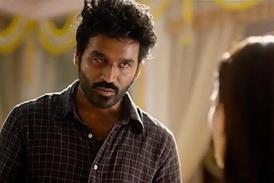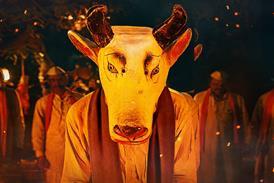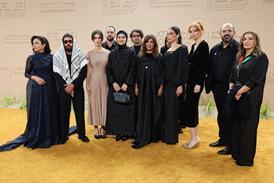For more than a century, Armenia's main export has been its people: men like MGM investor Kirk Kerkorian, who fled oppression and settled in Russia, France and North America. The country of 3.2 million people began post-Soviet independence in the early 1990s in the throes of a devastating earthquake and at war with its neighbours. Local cinema was no match for the evening news.
Now, with the ambitious Golden Apricot International Film Festival (Gaiff) in Yerevan (which took place July 13-20), Armenia plans by 2010 to have a renovated film studio, funded by investors from its diaspora. Those investors hope to export films soon afterward, and to attract film projects from around the world to shoot on location in the country's rugged mountainous landscape.
The festival's range reflects the small country's global ambitions - international and regional competitions, a market for co-productions, masterclasses by the respected Canadian-Armenian director Atom Egoyan, and a salute to the Californian-Armenian dramatist and author William Saroyan. The programme gives Armenian audiences a chance to see festival titles such as Julian Schnabel's The Diving Bell And The Butterfly, Carlos Reygadas' Silent Light, Li Yang's Blind Mountain and Guy Maddin's My Winnipeg.
Russian ambition
Armenia itself produces two to three feature films a year, according to Gaiff's artistic director, Susanna Harutyunyan, a former film critic. Total annual funds of around $1.5m come mostly from a small government budget. Film-makers with grander ambitions often go abroad, usually to Russia.
Indeed Armenians have flourished in the Russian industry where the five leading distribution firms are run by Armenians, who also distribute in Armenia, mainly on TV. "But none of these companies champions Armenian film," says Harutyunyan. However the largest of them, the Central Partnership, is now producing an Armenian-language remake of Song Of The First Love, a 1958 classic tale (echoing A Star Is Born) of a young singer who revives his career after early success and failure. "The film's target market is Armenia and the Armenian diaspora," says Central Partnership executive Armen Dishdishian.
The most significant transformation of cinema in the small country is set to come from the investment and philanthropy of Gerard L Cafesjian, the former co-owner of the US legal publisher West Publishing. Cafesjian, whose foundation funded the acquisition of the country's film studio, Hyefilm, in 2006, is also building a modern-art museum in Yerevan and funding the $25m reconstruction of the Cascade, a monumental staircase in the capital.
The acquisition of Hyefilm's land and Soviet-era buildings has been valued at $10m-$12m, with the total cost of renovation an added $10m-$15m. By 2010, when completion is planned, the firm CS Entertainment, named for Cafesjian and partner Bagrat Sarkisyan, will have a film studio, four television stations, a radio station and a cable operation in Yerevan. The firm has also launched a satellite operation in the US, the Armenian-language ArmeniaTV.
Even before restoring the studio, CS Entertainment has bought 50-year-use rights for prints of classic Armenian films, held by Mosfilm in Moscow, and has begun digitising those films. Its lab in Yerevan also operates a digitising-for-hire business.
International location
The initial markets for the studio's films are the Armenian diaspora in Russia, France and the US, says John Waters, vice-president of the Cafesjian Family Foundation. Digitised Armenian classics in the Armenian language would also be targeted principally to those audiences. "But once that film is dubbed into Russian or English, or subtitled, anybody who has an interest in quality films is your target market.
"Going forward," he says, "we will produce films in the Armenian language targeted primarily to the Armenian audience, but we expect to produce films also that could be done in Russian or English that are clearly designed for the market."
CS also envisions establishing Armenia as a destination for shooting and post-production. Executives from Europe, Hollywood and Bollywood have made visits.
At the Central Partnership in Moscow, Dishdishian is sceptical: "Location-wise, they don't have the infrastructure for shooting there, at least not now."
Unlike Yerevan, says Melik Karapetyan, who heads the film department at the National Gallery of Armenia, "Prague and Budapest already had existing technical infrastructure for film production and cheap labour." Yerevan now has advanced technology, he says, but lacks trained specialists. "It's a process. It's not going to happen very quickly."
In the meantime, several local features are nearing completion, mostly financed with state funds and co-production money. One is Border by Gaiff director Harutyun Khachatryan, which surveys the landscape after the country's war with Azerbaijan in the 1990s, from the perspective of a she-buffalo.
In September, shooting begins on Aram Shahbazyan's Chnchik, about a pregnant unmarried girl who is killed by her parents. Karapetyan, from the National Gallery, is producing the $400,000 project, which is being co-produced with Netherlands' Isabella Films, Germany's Zero Film and Swiss outfit Ventura Film.

















No comments yet